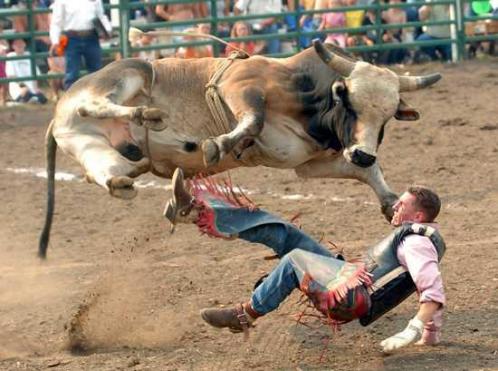Cards In This Set
| Front | Back |
|
Attitudes are the most distinctive and indispensable concept in contemporary social psychology. No other term appears more frequently. Is this correct? and who said this?
|
Yes! and it was Allport (1935)
|
 What are the two attitude definitions? |
Thurstone (1931) and Rosenberg and Hovland (1960). Thurston belives there is only one component to an attitude and developed the affect-based model (I like oranges/ I do not like oranges). Rosenberg and Hovland developed the three component model: 1) Affective (feeling) e.g. I like oranges2) Behavioral (intention to act) e.g. I will eat an orange every morning!3) Cognitive (believe) e.g. I believe oranges are good for you. :) Note: Easy way to remember this is the ABCs of attitudes.
|
|
Name the three self report measures and what are their disadvantages
|
1. Thurstone's (1928) method of equal-appearing intervals2. Likert's (1932) method of summating ratings3. Osgood, Suci and Tannenbaum's (1957) semantic differential Disadvantages include: susceptible to misrepresentation and reactivity.
|
|
Amy Dearest, what are some attitude measures that are not based on self reports?
|
Physiological measures such as galvanic skin response (sweating etc), heart rate, pupil dilation, electromyogram EMG. (Problems with this is that it doesn't show the quality of an attitudinal response)
Behavioral measures such as seating arrangements in a classroom or lost-letter technique. |
 Explain the Balance Theory (Heider, 1958) |
Heider's triads represent relations between different elements using the P-O-X notation. A triad is unbalanced if there are an even number of positive relationships. People are motivated to change their relationships in order to make their triads balanced. (P likes X, O dislikes X, P and O??)
|
|
What is the Expectancy Value Model (Fishbein & Ajzen 1975)?
|
Expectancy (belief strength): A probability estimate regarding the likelihood of the attitude event occurring (likely/unlikely)Value (evaluation): An affective evaluation of the attitude object (good/bad)Attitude = Sum of (expectations x values)Attitudes are weighed by how much you think they are going to impact.
|
|
What is the Attitude Function (Katz, 1960)
|
Instrumental - Attitudes help people to reach their goalsKnowledge - Attitudes help to organize informationExpressive - Attitudes help to establish a person's identity (says who you are and what you are about)Ego-defensive - Attitudes protect people from inner conflicts
|
 What was the study of La Piere (1934)? |
He was interested in whether attitudes towards Chinese people predict behavior. He visited 66 hotels and 184 restaurants across the USA with a Chinese couple and only one refued to serve them. He then sent a questionnaire six months later and 92% of the places visited said they would not accept members of the Chinese race. Attitude = prejudiceBehavior = non prejudice
|
|
Wicker (1969) studied correlations between Attitudes and Behavior and showed that they are very small. What do Fishbein & Ajzen, (1975) say about the low attitude-behavior correlations?
|
Researchers try to predict specific behaviors from general attitudes or vice versa. e.g. if asked do you think education is important most would answer yes but this does not mean everyone will study for the exam. A more likely correlation would appear if you asked do you intend to study
|
|
What is Fishbein & Ajzen (1980)'s theory of reasoned action?Are there any problems with this theory?
|
That attitudes really predict intention to behave and intention to behave predicts attitudes :D
However, sometimes intentions do not predict behavior. E.g. exercising in the gym. I intend to do it but I do not. reasons? resources, time. |
|
Yale concluded effectiveness of persuasive communications was a function of what three components?
|
Who, What and Whom.
|
|
What are the characteristics of WHO?
|
1. Perceived expertise2. Perceived trustworthiness3. Perceived status4. Attractiveness
|
|
What are the components of WHAT?
|
1. Order of arguments (first and last are remembered better than middle)2. One vs Two sided arguments (Two sided messages work best on hostile audiences)3. Type of medium (Simple messages are more persuasive when presented in video format. Complicated work best in written format)4. Fear (Fear arousing messages are more persuasive but only up to a certain point).
|
|
Components of WHOM?
|
1. Gender (Women are more easily persuaded than men. although this is questionable as it did not take into account subject area. Women would be more persuaded on topics men know more about and vice versa!!) 2. Self esteem (People with average self esteem are more easily persuaded as those with high are too sure of themselves and those with low do not concentrate on the message)3. Intelligence and initial position (Intelligent audiences who disagree with the message are more persuaded when they hear two sided arguments. Less intelligent audiences who already agree with the message are more persuaded when they hear one sided arguments.
|
 Explain the Elaboration-likelihood model (Petty & Cacioppo 1986) Cacioppo = cappucino hahaha :) |
People are motivated to hold correct attitudes. However some are too lazy or do not have time to read through all information. There are two routes to attitude change: 1) Central Route - Persuasion is mediated by argument based thinking (elaboration) (Going through all articles etc)2) Peripheral Route - persuasion is mediated by factors other than argument-based thinking (peripheral cues) (look at perceived expertise, attractiveness, trustworthiness of speaker).
|



